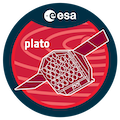Conveners
Exoplanets Evolution
- Christine Lam
- Christoph Mordasini
In the midst of the era of JWST, CHEOPS and ground-based spectrographs such as ESPRESSO, we are obtaining unprecedented data, spanning from atmospheric metallicities of sub-Neptunes to tidal deformation of hot Jupiters. However, a deeper characterization requires radii of low-mass planets around Sun-like stars, precise ages at all spectral types, and Love numbers at colder equilibrium...
Sub-Neptune and Neptune-sized Exoplanets exhibit a more and more surprising wide diversity of masses and bulk density. Determining their internal composition is, actually, a key parameter that can provide insights into whether these planets are predominantly composed of volatile materials or if they have significant amounts of denser substances such as water or rocky materials. Such...
Many tightly-packed transit-detected systems harbor complex dynamical evolution governed by two-body resonances and/or chains of resonances. I will discuss recent results showing how formation and evolution studies can be useful to constrain the orbital parameters of these systems, which generally suffer from significant observational uncertainties. More precisely, I will show how i) periodic...
Although over 5000 validated exoplanets are currently known, there are still large gaps in our understanding of how planets form and evolve. Young exoplanets (<1Gyr) hold the key to answering many of these outstanding questions, existing in one of the most interesting eras of exoplanet evolution, where their orbital locations, compositions and atmospheres are rapidly evolving. Such exoplanets...
Planetary formations naturally forms resonant chains of planets, but few such systems persist for more than 1Gyr due to evolutionary events such as destabilisation, planet-planet scattering, mass loss, etc. Therefore systems in resonant chains, especially pristine first-order chains of three-body Laplace resonances, are key windows for the charactersation of unmodified exoplanets. A system of...
The thousands of exoplanet discoveries have shown us that planets are ubiquitous, come in various sizes and architectures and are found orbiting different stars. Exploring this broad variety of exotic worlds, studying planets both like and unlike our own, allows us insights in the mechanisms of planet formation and evolution. In this talk I will take you on a tour of exoplanets characterised...
The radius distribution of Earth- to Neptune-size exoplanets contains two dominant peaks assigned to populations of predominantly rocky and volatile-rich objects, respectively, separated by a valley at 1.7 Earth-radii. Understanding the exact composition, formation, and evolution of such objects is a major challenge in current exoplanet research. Previous work has compared radius distributions...
ESA PLATO and NASA Roman are both scheduled for launch in 2026, and both will undertake ground-breaking exoplanet surveys that will be transformative for studies of exoplanetary architecture. As the recently appopinted ESA Scientist to the Roman Galactic Exoplanet Survey, I will outline the Roman exoplanet science goals and highlight powerful PLATO-Roman science synergies. Roman will...
We present new CHEOPS data for the two inner super-Earths (P=3.5 and 6.4 days) and one outer sub-Neptune (P=13.6 days) of the compact HIP 29442 system, allowing us to significantly improve the radius precision and accuracy of all three planets. Especially for the 6.4 day planet, this significantly changes the inferred nature of the planet and leads us to conclude that caution is required when...

